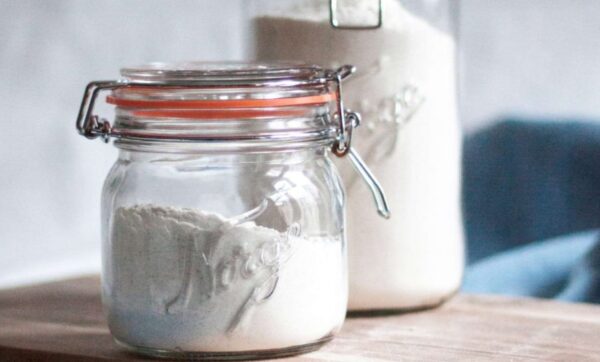67 Views

Most households, flour is a quintessential staple, which is believed to have a long shell life, but it often loses its freshness if not stored properly.
Flour can absorb moisture, attract pests, and even go rancid if exposed to heat or air.
Well, here are several ways to keep flour fresh for a long time, ensuring you always have high-quality flour ready for your recipes.
Here are five effective methods to preserve its freshness:
1. Store in airtight containers
One of the most important steps in keeping flour fresh is to store it in airtight containers. Flour, when exposed to air, can quickly lose its quality and absorb moisture from the environment, which can lead to clumping, spoilage, or the growth of mold. Airtight containers protect the flour from air, moisture, and pests. You can use glass jars, plastic bins with secure lids, or resealable bags. Make sure the container is sealed tightly each time you use the flour to avoid any contaminants from getting in.
2. Keep in a cool, dry place
Heat and humidity are two of the biggest enemies of flour. Storing flour in a warm or humid environment can cause it to deteriorate quickly, losing its quality and freshness. It’s essential to store your flour in a cool, dry place, away from heat sources such as stoves, ovens, or direct sunlight. A pantry or cupboard that maintains a consistent, moderate temperature is ideal for preserving flour. Avoid placing flour near damp areas, like a dishwasher or sink, as this can lead to mold growth.
3. Refrigerate or freeze
For long-term storage, especially if you buy flour in bulk or use whole grain varieties, refrigeration or freezing is an excellent option. Whole wheat flour and other specialty flours tend to have a higher oil content, which makes them more prone to going rancid. By storing flour in the fridge or freezer, you can significantly extend its shelf life. Place the flour in an airtight, freezer-safe bag or container to avoid freezer burn and preserve its quality. Flour can be stored in the fridge for up to six months or frozen for up to a year. Before using, let the flour come to room temperature to prevent condensation from affecting its texture.
4. Seal after every use
After you open a bag of flour, it’s important to seal it tightly each time you use it. If you are using the original packaging, use a clip or a tight rubber band to keep the bag sealed. If you’ve transferred the flour to a container, always close the lid securely after each use. This prevents air from getting in, which can cause the flour to become stale or exposed to pests. Sealing the flour tightly also helps maintain its fresh aroma and flavor, keeping it ready for baking whenever you need it.
5. Buy in smaller quantities
If you don’t use flour frequently, consider buying smaller quantities instead of large bulk bags. Flour has a shelf life, and the more you store, the greater the chance it will go stale or lose its flavor before you can use it all. Purchasing flour in smaller amounts ensures you’re using it while it’s still fresh, and you’re less likely to waste any. It also allows you to rotate your stock more frequently, ensuring that your flour is always at its best quality when you need it.
